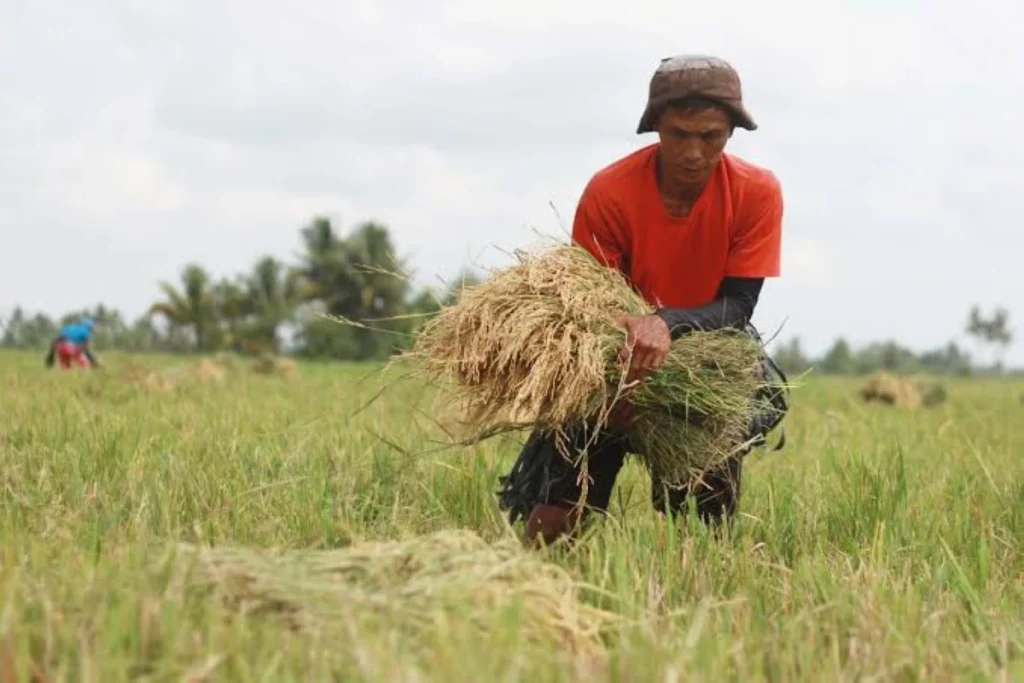The value of the country’s agriculture and fisheries output recovered in the first quarter of the year, driven by higher production in nearly all subsectors, signaling the sector’s steady recovery from the impact of severe weather disturbances last year.
Based on data from the Philippine Statistics Authority (PSA), agriculture and fisheries production, at constant 2018 prices, reached ₱437.74 billion, a 1.9-percent increase from the ₱428.99 billion during the first quarter of 2024.
This is a strong recovery from the three straight quarters of contraction last year—a 3.3-percent downtick in the second quarter, 3.6-percent drop in the third quarter, and 2.2-percent dip in the fourth quarter.
The Department of Agriculture (DA) had attributed last year’s lackluster performance of the agriculture sector to the impact of the El Niño phenomenon during the first half of the year and the string of successive storms in the second half, as well as the spread of animal diseases.
In a statement, Agriculture Secretary Francisco Tiu Laurel said the positive performance of the farm sector in the first quarter of this year was made possible through the favorable weather conditions in the past three months, coupled with the DA’s interventions.
According to PSA data, the value of crops, poultry, and fisheries subsectors all posted growth, with the livestock sector posting the sole contraction.
The crops subsector, which accounted for 57 percent of total agricultural output, saw a slight increase from ₱247.04 billion to ₱249.61 billion.
Tobacco recorded the highest growth with 80.4 percent, while abaca had the biggest drop in production with 15.4 percent.
The value of palay (unmilled rice) production inched up by 0.3 percent, after four straight quarters of decline last year.
Corn, meanwhile, continued its downward trend by recording a 5.1-percent drop in the first quarter. The figure succeeded the 0.6-percent drop in the fourth quarter of 2024.
Poultry, which represents 17.2 percent of total output, logged the highest growth of 9.4 percent in all subsectors. It contributed ₱75.22 billion in the past quarter, from ₱68.76 billion in the same period last year.
Improvements were seen in the value of chicken eggs by 12.1 percent, chicken by 8.7 percent, and duck by 1.5 percent. Only the value of duck eggs production declined during the first three months, notching a 2.2-percent dip.
The value of fisheries production grew by 1.5 percent, contributing ₱55.1 billion or 12.6 percent of the total output of the sector. During the first quarter of last year, it recorded ₱53.73 billion.
Only the livestock subsector, still reeling from the impact of the African swine fever (ASF), posted a decline in the first quarter.
The PSA said livestock slipped 2.8 percent to ₱57.82 billion from ₱59.46 billion during the first three months of 2024.
Increases were seen for dairy at 10.5 percent, cattle at 1.3 percent, and goat at 1.2 percent. However, the value of hog production remained on the downward slope, securing a 3.7-percent drop this year.
Laurel said he is hopeful that the commercial rollout of the long-awaited vaccine against ASF will begin later this year to kickstart the hog repopulation effort.
He earlier issued a challenge to the swine industry to produce an additional two million hogs starting next year to return to the pre-ASF population by 2028.
Before the ASF’s first outbreak in 2019, the national hog inventory stood at 14 million heads. Now, the inventory is at around eight million.
“We are optimistic that the recovery in the first quarter signals momentum for the latter half of the year,” said Laurel.
Laurel said the latter half of the year will bring in new infrastructure such as cold storage facilities and rice processing systems to further strengthen the sector’s production capability.
“By boosting agricultural production, the government aims to stabilize food supply and prices while managing inflation,” he added.

